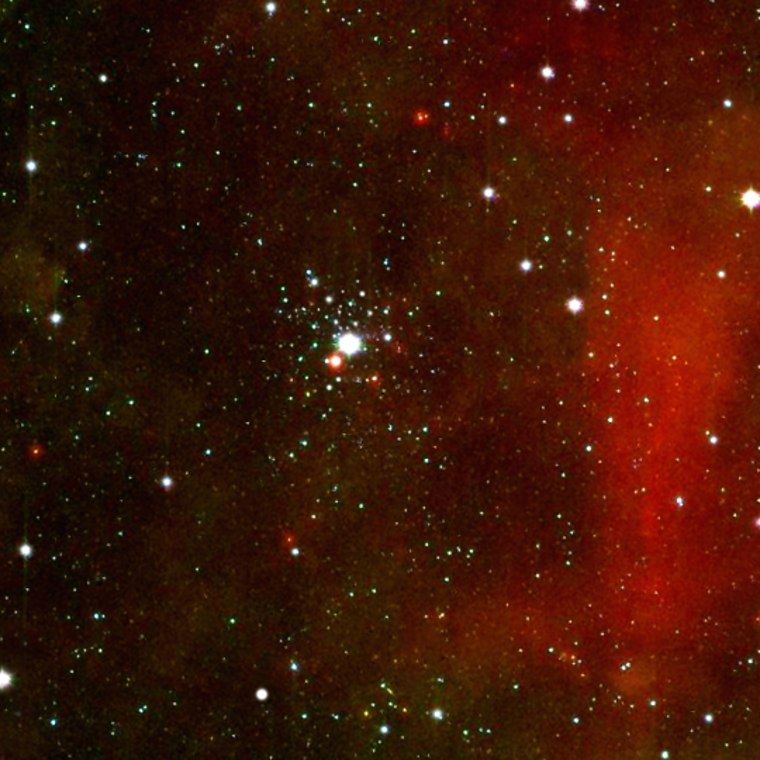Compared to small, rocky worlds like Earth, Jupiter-class gas giant planets form quickly or not at all, a new study shows.
The realization stems from infrared studies of a 5 million-year-old star cluster in the constellation Canis Major made with NASA's Spitzer Space Telescope. Scientists discovered that all stars in the cluster that were as least as big as the sun had no accompanying disks of gas and dust from which to make gas giants like Jupiter.
Only a few stars in the cluster that were smaller than the sun still had protoplanetary disks, though several did still have debris remnants that could be used to build smaller rocky bodies like Earth or Mars or icy worlds like Pluto, say researchers with the Harvard-Smithsonian Center for Astrophysics in Cambridge, Mass.
Extrapolating from the data, scientists conclude that while a planet like Earth took 20 million to 30 million years to evolve, Jupiter was fully grown in a fraction of the time, just 2 million to 3 million years.
"We have an understanding of how star formation proceeds, and our own star should not be an exception to that. It is the assumption that our solar system should not be special," said lead researcher Thayne Currie, who presented the team's findings at the American Astronomical Society meeting this week in Long Beach, Calif.
The cluster studied by Currie and his colleagues, NGC 2362, is located about 4,500 light-years away from Earth — too far to be probed with current technologies to determine if any of its stars harbor planets, Currie told Discovery News.
The research builds on earlier findings from a team led by University of Arizona astronomer Ilaria Pascucci that probed 15 sunlike stars, ranging in age from 3 million to 30 million years old, for gas that could be used to form Jupiterlike planets. They discovered that all the stars, even the very young ones, have less than 10 percent of Jupiter's mass in gas swirling around them, indicating that the giant worlds either had already formed or they were not to be.
Currie's team says the window of opportunity for stars to form Jupiter-class worlds is even smaller, less than 5 million years.
"Whatever process is responsible for forming Jupiters has to be incredibly efficient," Currie said.
Scientists have two leading theories for how planets like Jupiter form: by building up a solid core which gases then accrete onto, or from gases that collapse in on themselves due to gravitational forces.
If the second theory is correct, Jupiter-sized worlds could form in just thousands to tens of thousands of years, said University of Washington astrophysicist Thomas Quinn, who has done computer modeling of planetary formation.
"There's still an ongoing debate about exactly what the time scale would be," he said.
